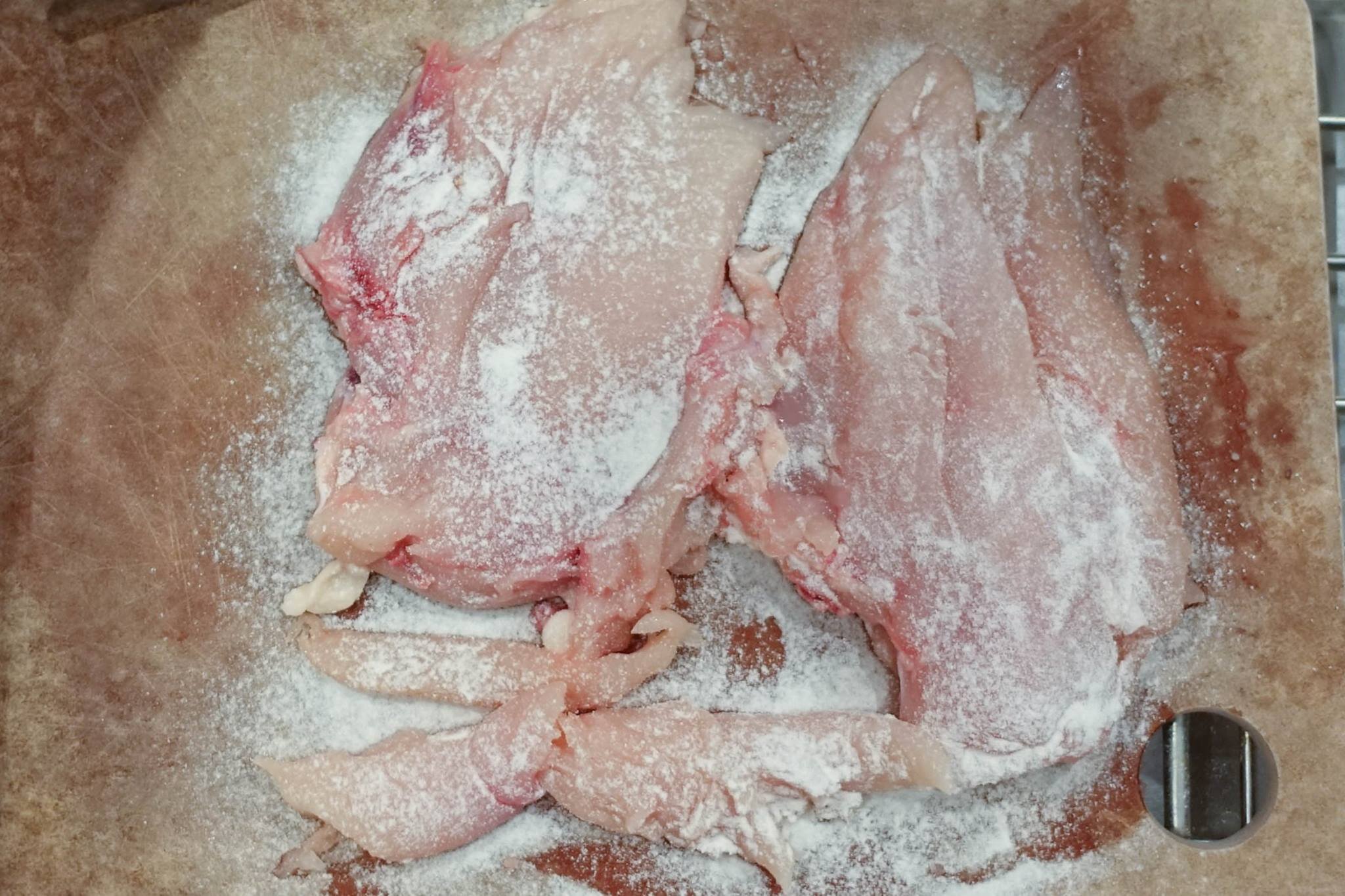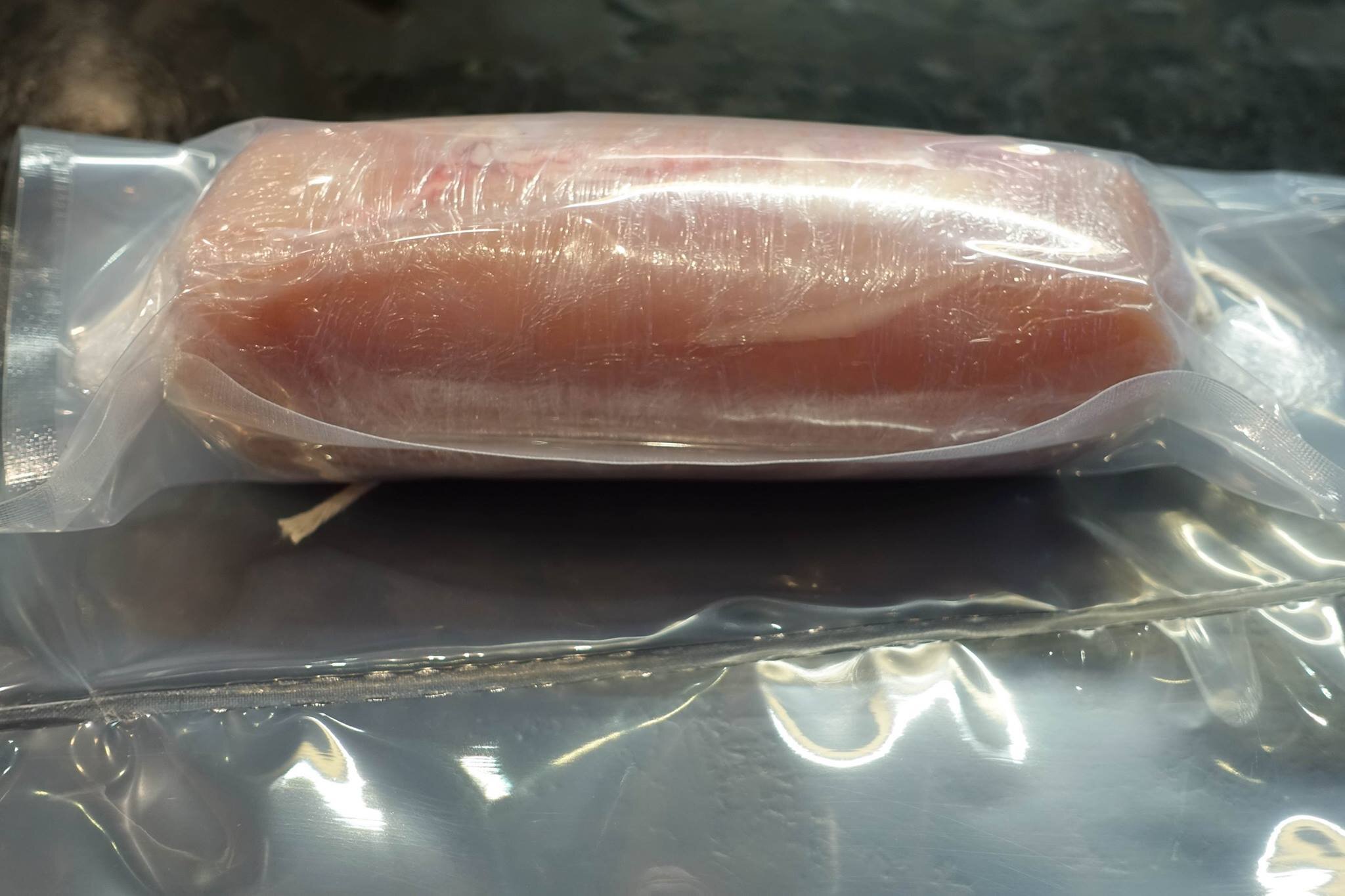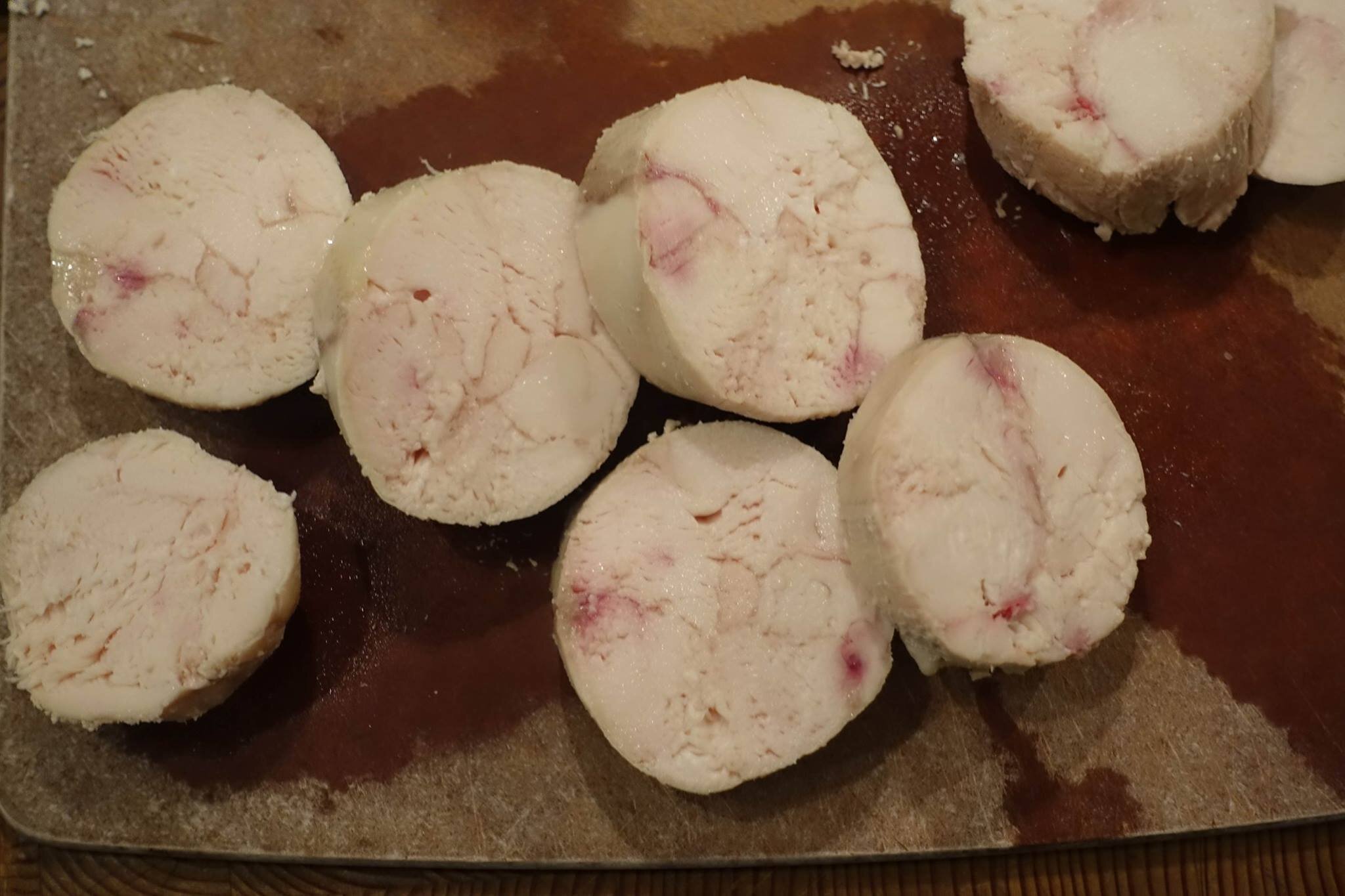Meat Glue Redux
In a previous post, Roasted Cauliflower & Meat Glue Experiment, I described the enzyme transglutaminase which binds proteins allowing one to “glue” food together. Having success joining two fish filets to make a roulade, this time I wanted to join pieces of chicken. Why? you might ask. Because as a teenager, I loved McDonald's Chicken McNuggets and I wanted to make a home version.
If you follow the critics of McDonalds, you may have heard that they use “meat glue” to bind unwanted bits of chicken together to form Chicken McNuggets. McDonalds to counter that their McNuggets are made from pink goo, produced a marketing video showing the actual process. As it turns out, they don’t bind chicken bits with Aptiva, but rather rely on the binding properties of the chicken’s own protein which they extract with salt and phosphate. This along with the bread coating helps hold the ground breast and thigh meat in a nugget shape.
Knowing this, I decided rather than try and recreate a McNugget at home, I would do a riff on the salmon roulade and make a chicken roulade with two chicken breasts that I deboned and skinned. This process was essentially the same as used in the Trout Roulade I wrote about in my Aug. 8th post if you are interested.
Two chicken breasts deboned and skinned. No attempt made to do this neatly as the ideas was to "glue" it back together.
Chicken sprinkled with Aptiva (transglutaminase).
Chicken bits pressed together, rolled into a roulade in kitchen wrap, and vacuum packed for sous videing.
Voila! A chicken roulade cooked at 145°F (Sous vide allows lower temperature cooking, but requires longer time to fully pasteurize). Next time I would cook at 138°F to achieve a softer moister result.
Roulade cut into rounds. You can see the individual bits of chicken firmly attached to each other. These were then pan seared.
The best part was the skin which I salted and peppered, and then crisped in the oven at 400°F between parchment paper for 45 minutes. Next time I would for only 30' as although delicious, it was a bit too crisp!





